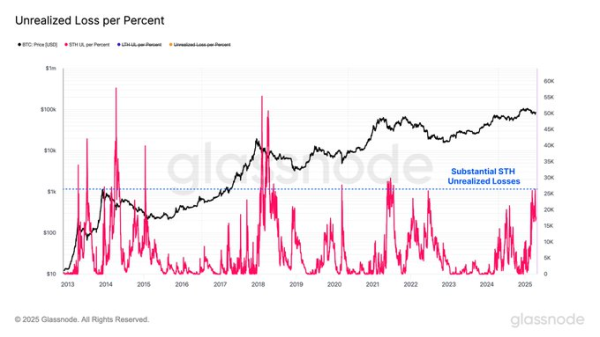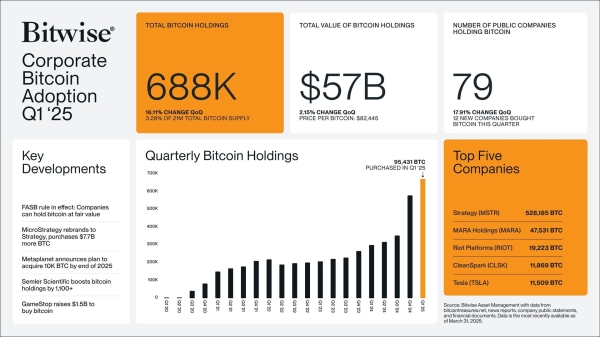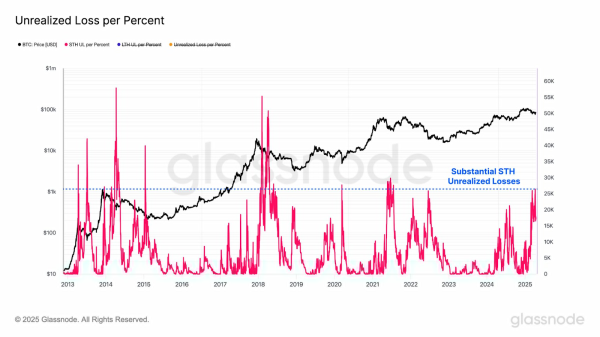Trump’s lead over Harris widens to 23% in prediction markets 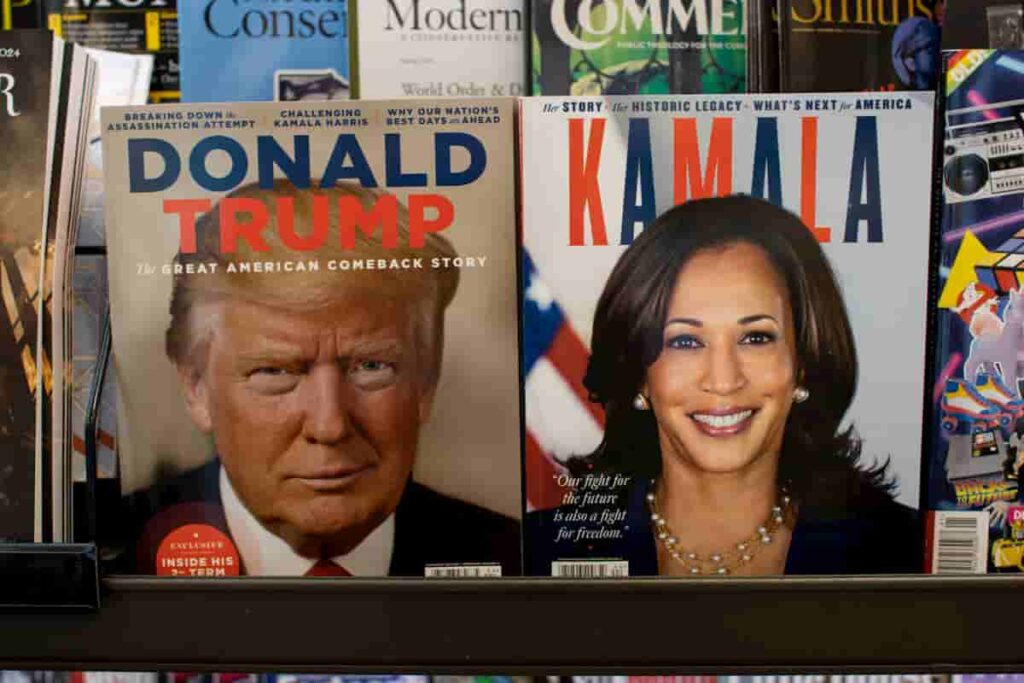
![]() Cryptocurrency Oct 21, 2024 Share
Cryptocurrency Oct 21, 2024 Share
Two weeks and a day away from the upcoming U.S. presidential election, the odds of Donald Trump securing a second presidency have surged per major prediction market platforms.
Although traditional polling data suggests that the Republican candidate is gaining ground, particularly in key swing states, national polling still paints the picture of a close race.
At the time of publication, Kamala Harris maintains a razor-thin 1.7% lead — according to the latest findings from FiveThirtyEight and Nate Silver’s model.
Picks for you
XRP adds $1 billion after Elon Musk mentions the token 4 hours ago Bitcoin futures open interest hits all-time high; Here’s what it means 5 hours ago ChatGPT-4o predicts Silver price for end of 2024 5 hours ago Meme coin hunter turns $296 into $620,000 in 4 hours 7 hours ago 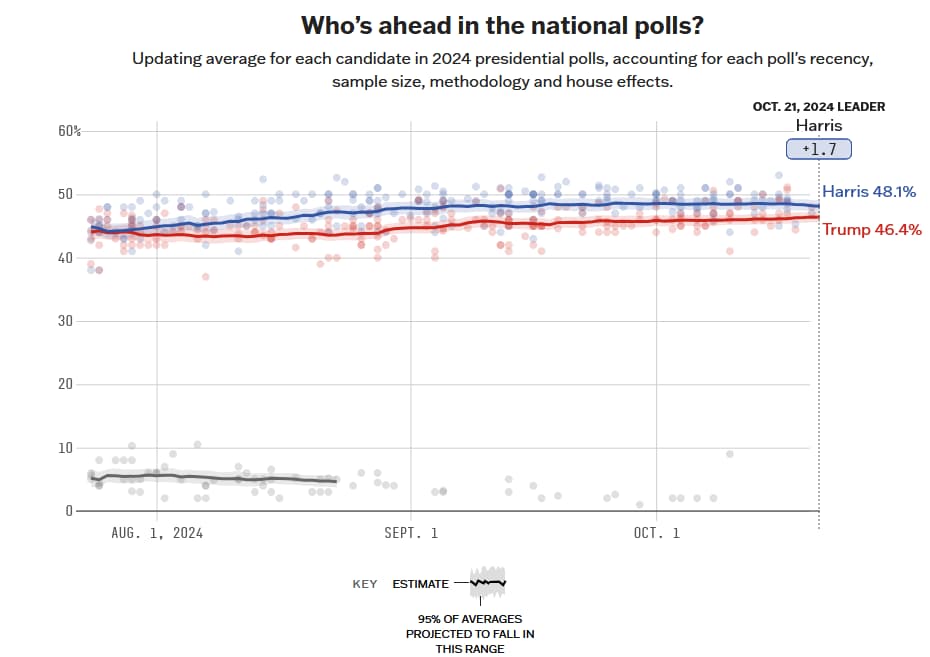 National poll averages as of October 21. Source: FiveThirtyEight
National poll averages as of October 21. Source: FiveThirtyEight
Swing state polls show increased momentum for Trump’s campaign
In the immediate aftermath of the presidential debate, prediction markets gave Harris and Trump equal odds of victory. By October 4, the Republican candidate had managed to etch out a 1% lead — just four days later, the lead had widened to 7%, then expanded to 19% by October 16.
These increases coincided with the release of new polling data favorable to Trump’s campaign. Per Nate Silver’s latest update, the billionaire candidate has seen the tides turn in his favor in every single swing state on both a monthly and weekly basis. Whereas Harris’ lead in the key states of Wisconsin and Nevada are miniscule, at 0.3% and 0.6% respectively, Trump’s smallest margin, in North Carolina, is 0.8% — his next smallest margin, in Georgia, is twice as wide at 1.6%.
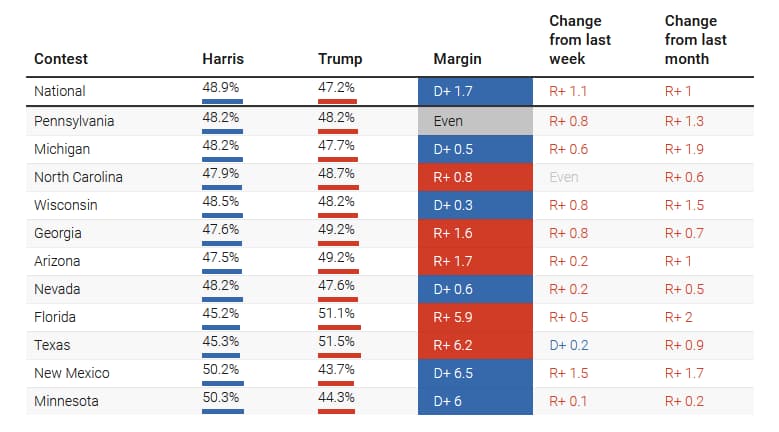 Swing state poll averages as of October 21. Source: Nate Silver
Swing state poll averages as of October 21. Source: Nate Silver
If this pace continues, Wisconsin, Michigan, as well as the national race would have Trump in the lead by the time Election Day comes around.
Prediction markets weigh in on presidential race
Prediction markets seem to have reacted in an outsized way compared to official data. While the news is certainly positive for former President Trump, his lead in prediction markets now sits comfortably in the double digits.
Trump has a 61.3% chance of victory, a 1.5% increase from the previous update — while Harris’ odds are projected at just 38.5% after a 1.7% decrease, per international platform Polymarket. The margin is 22.8%.
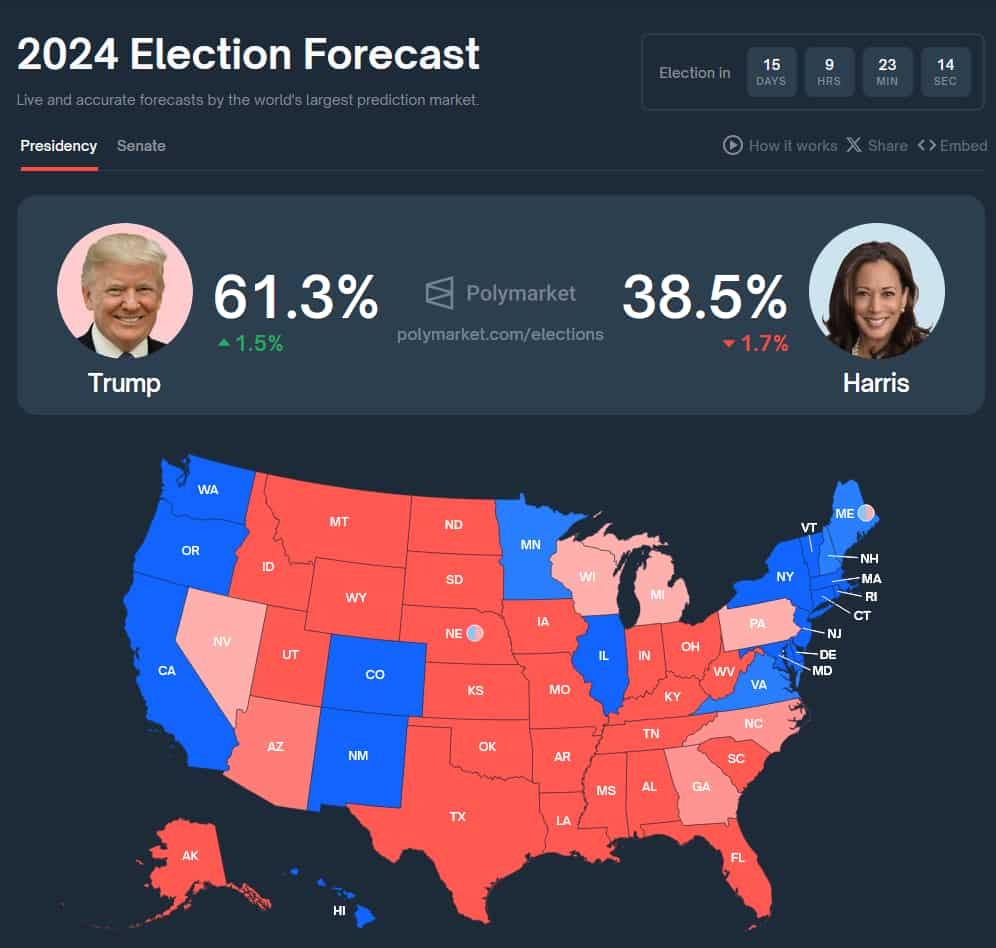 Election odds as of October 21. Source: Polymarket
Election odds as of October 21. Source: Polymarket
Kalshi, a U.S. based prediction platform, puts the odds at 57% in favor of Trump — at press time, Harris’ odds are just 43%. While lower, the margin per Kalshi is still a significant 14%.
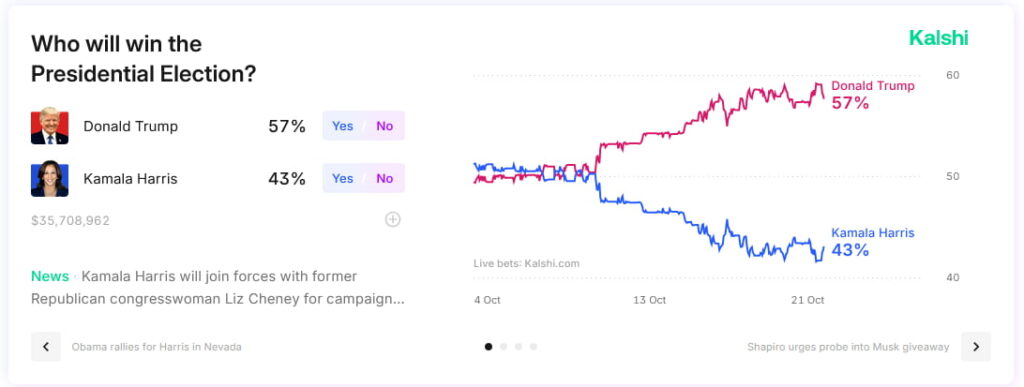 Election odds as of October 21. Source: Kalshi
Election odds as of October 21. Source: Kalshi
Concerns about election odds manipulation
Although it goes without saying, it bears repeating — prediction markets are in no way a suitable substitute for rigorous statistical models based on hard polling data that use well-established methodologies.
Prediction markets can, however, offer a glimpse into popular sentiment — ‘can’ being the operative word here.
An October 18 report from the Wall Street Journal alleges that the increased odds that Trump has seen from prediction markets in the last couple of weeks could be due to intentional manipulation.
Per WSJ, Miguel Morel, CEO of analysis firm Arkham Intelligence, stated that there is ‘strong reason to believe’ that four accounts — Fredi9999, Theo4, PrincessCaro, and Michie, all created between June and October, belong to the same entity.
In total, these four accounts have placed around $30 million in bets — all were funded using the same crypto exchange, and all exhibit similar betting patterns.
Rajiv Sethi, the economist who co-authored a paper detailing a similar case of manipulation in Senator Mitt Romney’s 2012 presidential campaign, shares Morel’s views on the matter — and an unnamed WSJ source has alleged that Polymarket is investigating the matter.
To cap this off, it’s important to remember that prediction markets are profit-driven ventures, meaning that odds are structured with the goal of generating returns for the platform rather than providing an accurate reflection of electoral probabilities.
